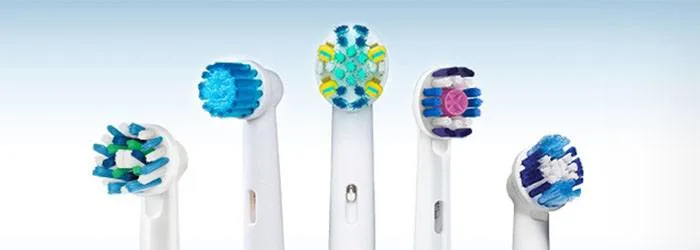
When it comes to oral care, consistency is everything. The single most important element of good oral care is following a regular routine of twice-daily tooth brushing and daily flossing. One of the best ways to make the most of your oral care routine is brushing with the right type of toothbrush bristles. Learn about the differences between soft, medium, and hard bristles and everything in between.
A toothbrush is personal, which is why they’re available in a variety of sizes and shapes. If you have a large mouth, you may prefer a full-sized toothbrush head. If you have a small mouth, opt for a compact head. And some adults even prefer youth or child-sized toothbrushes because they find them easier to use for brushing behind the back teeth.
Different Types of Toothbrush Bristles
Using the right toothbrush bristles can make your daily oral care routine more enjoyable—and more effective. See what the difference is across soft, medium, and hard bristles to learn which types is best for you:
Soft bristles: Most dentists recommend opting for a softer bristle type as they can be gentler on tooth enamel and gums.
Medium bristles: Slightly firmer bristles can be more comfortable for some people; however, they must be wary of the pressure applied.
Hard bristles: It is a consensus that most individuals should brush with soft or medium bristles. A hard toothbrush can be too firm for gums and tooth enamel which can lead to recession and enamel loss.
Choosing a Toothbrush Based on Bristles
How do you go about choosing a toothbrush? Sometimes, it’s not easy. There are a lot of choices out there when it comes to purchasing a toothbrush, which makes it difficult to know what to look for. A good starting point is to ask your dentist or dental hygienist for a recommendation.
In addition, here are some general tips on what to look for:
Small brush head and well-designed bristles: Choose a toothbrush with a small brush head and a bristle design that helps you to get to the hard-to-reach places of your mouth.
Soft bristles: Your toothbrush should have soft bristles that are gentle on your teeth and gums. Always use a medium to soft bristled toothbrush and if you have recession, you may want to consider an extra-soft bristled toothbrush.
Multi-angled bristles: Multi-angled bristles are designed that way to increase contact with tooth surfaces between teeth, lifting out plaque even from tough spots. That’s why angled bristles are superior to straight ones.
Comfortable handle: Many toothbrushes have non-slip grips which make them easy to use even if wet. Additionally, the handles on many Oral-B toothbrushes have been modelled based on research into the five different ways that people hold their toothbrush while brushing.
Powered Toothbrush Heads & Bristle Movements
As with a manual toothbrush, the best power toothbrush for you is the one you like and will use every day. Electric toothbrushes come in different sizes, too. In general, the replaceable heads of electric toothbrushes are smaller than the full-sized head of a manual toothbrush, so if you are used to a full-sized head, the electric toothbrush may take some getting used to.
But keep in mind that one of the benefits of the smaller head size on a power toothbrush is that it is better able to clean each tooth individually. Many different styles of brush heads are available, from polishing brush heads to brush heads for sensitive teeth.
The bottom line is that if you choose the toothbrush that is the right size and style of bristles for your mouth and your oral care needs, you’ll be able to clean your teeth more completely and help prevent bacterial build-up and the development of plaque.
Related Articles
Sign Up
for expert advice and exclusive offers






